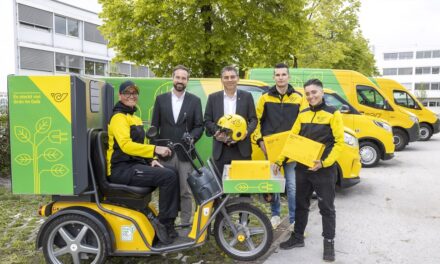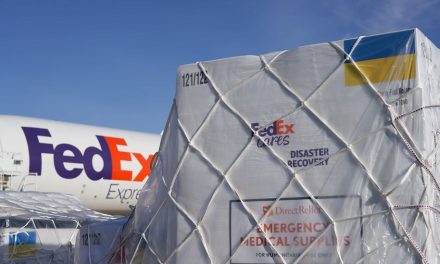
FedEx moving data center to "green" facility in Colorado
FedEx Corporation is moving its largest US data center to a new facility in Colorado Springs, Colorado, it says will be more environmentally sustainable. A three-year program is now underway in which core systems are being transferred from the company’s Customer Technology Center in Memphis, Tennessee, to the new Enterprise Data Center–West, located next to the FedEx Rocky Mountain Tech Center.
The move involves a “massive” migration of data, FedEx said. However, the company told Post&Parcel that many of its staff currently based in Memphis will remain there.
The new Colorado Springs facility has been expanded from an existing building since 2006, to provide 166,000 square feet and an energy efficient operation for the data servers.
FedEx uses an “enormous” amount of data to manage its delivery services, and as well as its Enterprise Data Center–West facility has a number of data centers in North America and the rest of the world to cope.
|
• Industry leaders will be at the PosTech conference in Dubai next month, to discuss latest innovations in technology within the mail and express industry. Click here for details » |
Computer data centers – part of the often-forgotten environmental impact of digital communications – can take as much power to run as small towns. The Enterprise Data Center-West will require around eight megawatts of power, a similar demand to about 6,000 homes.
The location in Colorado Springs itself has been a central part of the project’s overall effort to reduce the FedEx environmental impact – compared to the site in Memphis, the low humidity and cooler air in the Colorado Springs area will help keep power-hungry data servers cool while saving electricity.
FedEx expects the facility to benefit from effectively 5,000 hours of “free cooling” each year.
Other sustainable technologies at the Enterprise Data Center–West include variable frequency drives, which can fine-tune the amount of power consumed by the data servers in relation to the current demand for power in the grid. This keeps costs down by reducing power consumption during peak times, when electricity is most expensive, as well as reducing the centre’s strain on local electricity grid.
FedEx is applying for the building to attain a “Gold” standard in the Leadership in Energy & Environmental Design (LEED) certification program run by the US Green Building Council.
“Technology model”
Kevin M. Humphries, senior vice president of Information Technology for FedEx Services, said the project provided a “technology model” that would help FedEx improve productivity and reliability while reducing impacts on the environment.
He said: “The EDC-W represents a major milestone in our strategy to leverage advanced technologies for the benefit of our customers and to position FedEx for future growth.”
Aside from the direct environmental impacts from the data servers, FedEx said impacts of the new building were reduced by diverting 75% of waste from the facility’s construction from landfill, using recycled content for 14% of the materials used, and sourcing 11% of the building products locally.
Irrigation systems have allowed water consumption to be reduced by 51%, while heating and ventilation systems have been designed to minimise emission of ozone-depleting substances.
FedEx spokesperson Deborah Willig explained that the switch to a more sustainable data center was part of the company’s responsibility to minimize its environmental impact, but with a nod to the reduction in energy usage at the new site, she said making the data center “green” would not mean extra expense for FedEx.
“At the very minimum, it is break-even,” she said. “FedEx is very active in trying to reduce its environmental footprint, but it has to be economically sustainable as well, it has to make business sense.”
As well as striving to use energy more efficiently, the new centre will include systems to protect against power outages and ensure constant reliability.
This includes being connected to two separate utility substations, with the capability to switch easily between the different electricity supplies, as well as an on-site energy storage unit containing nearly 2,000 batteries and eight generator sets that will be able to keep the data centre running when needed.












